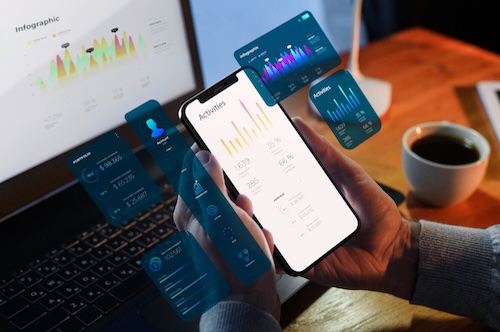Influencer marketing is one of the fastest-growing areas of digital advertising. In 2025, it is projected to surpass $24 billion globally (Statista). Yet, with this growth comes an equally growing risk—fraudulent partnerships. Fake influencers, inflated engagement rates, and bot-driven followers undermine brand safety and waste marketing budgets.
This is where APIs play a transformative role. By tapping into real-time social media data, APIs help brands verify influencer authenticity, detect fraud patterns, and avoid risky collaborations. In this blog, we’ll explore how APIs are shaping influencer fraud detection in 2025, why they’re essential for brand safety, and how businesses can use them to ensure genuine partnerships.
We’ll also compare different fraud detection methods, highlight key API-driven insights, and share best practices for using tools like Phyllo’s Influencer Vetting for Brand Safety, Social Media Intelligence, Social Screening, and Social Listening APIs.
The Rising Challenge of Influencer Fraud in 2025
Influencer fraud has become one of the biggest threats to digital marketing ROI. Fake engagement and audience manipulation continue to cost brands millions each year.
Key Statistics on Influencer Fraud
Before diving into APIs, it’s important to understand the scale of the problem:
- Over 49% of Instagram influencers were found to have engaged in some level of fraud.
- Marketers lose an estimated $1.3 billion annually due to fake influencer activities.
- 30% of influencer campaigns underperform because of misrepresented audience demographics.
Why Fraud Persists
Influencer fraud persists because of:
- The ease of purchasing fake followers and likes.
- Lack of transparency in influencer analytics.
- Manual vetting processes that are slow and prone to error.
APIs solve this challenge by delivering transparent, real-time, and verified data that no screenshot or manual check can match.
Understanding Influencer Authenticity
Influencer authenticity is more than follower counts. It reflects whether an influencer’s identity, audience, and engagement are genuine and aligned with brand values.
Elements of Influencer Authenticity
To evaluate an influencer’s authenticity, brands must look at:
- Audience demographics – Are followers from relevant geographies and age groups?
- Engagement quality – Are comments authentic conversations or bot-generated spam?
- Content alignment – Does the influencer consistently create content aligned with their niche?
- Brand partnerships history – Are they transparent about collaborations?
Without APIs, most of this evaluation remains surface-level. With APIs, brands can dig deeper into social media data to confirm what’s real and what’s fabricated.
How APIs Detect Fraudulent Partnerships
APIs enable brands to access structured, verified, and compliant influencer data directly from platforms like Instagram, TikTok, YouTube, and LinkedIn. This helps detect fraud at multiple levels.
1. Audience Verification
APIs provide detailed Instagram, TikTok, or YouTube follower demographics. Instead of relying on influencers’ self-reported data, brands can verify if an influencer’s followers are authentic.
- Real follower insights vs. bot-heavy profiles.
- Audience location checks to ensure regional targeting accuracy.
- Cross-platform comparisons to spot inconsistencies.
2. Engagement Analysis
Fraudulent influencers often buy likes and comments. APIs flag suspicious engagement by:
- Detecting sudden spikes in engagement that don’t align with follower growth.
- Identifying repetitive or generic comments common to bots.
- Comparing engagement ratios with industry benchmarks.
3. Growth Pattern Monitoring
Authentic influencers grow steadily. Fraudulent influencers often show erratic growth. APIs track:
- Follower acquisition trends.
- Unnatural spikes due to follower-purchasing services.
- Retention rates of audiences over time.
4. Partnership Transparency
APIs help detect if influencers fail to disclose paid promotions. Social listening APIs scan for brand mentions and match them against declared partnerships.
This ensures compliance with advertising guidelines and prevents reputational risks.
Comparison: Manual Vetting vs API-Driven Vetting
Here’s a side-by-side look at how traditional vetting compares with API-driven vetting:
APIs clearly provide a faster, more accurate, and scalable solution for influencer authenticity checks.
Why Brand Safety Depends on API-Driven Influencer Vetting
Brand safety has become a non-negotiable priority. Partnering with fraudulent influencers exposes brands to financial loss, reputational harm, and regulatory scrutiny.
Key Risks of Fraudulent Partnerships
- Financial loss: Campaign ROI diminishes with fake followers.
- Reputational harm: Association with inauthentic influencers erodes consumer trust.
- Compliance risks: Non-disclosure of paid content can invite penalties.
By integrating tools like Phyllo’s Influencer Vetting for Brand Safety, brands can ensure they only collaborate with authentic creators.
The Role of Social Media Intelligence in Fraud Detection
Fraud detection requires not just vetting but also ongoing monitoring. Social Media Intelligence APIs provide deep insights into influencer behavior, content performance, and audience sentiment.
These tools allow brands to:
- Identify sentiment shifts in influencer content.
- Monitor engagement quality over time.
- Detect controversial or risky content before partnerships.
APIs like Phyllo’s Social Media Intelligence help maintain continuous oversight, strengthening brand safety.
Social Screening vs Social Listening: Two Sides of Fraud Detection
Fraud detection is not limited to followers and engagement. Influencer authenticity also depends on their online persona and brand alignment.
Social Screening APIs
- Evaluate an influencer’s historical content.
- Flag offensive, harmful, or brand-damaging posts.
- Screen influencers for alignment with brand values.
Phyllo’s Social Screening ensures that no past content threatens a brand’s reputation.
Social Listening APIs
- Track influencer mentions across platforms.
- Monitor brand mentions for authenticity.
- Identify undisclosed or suspicious partnerships.
Phyllo’s Social Listening API provides context by analyzing audience sentiment around influencers.
Real-World Use Cases of API-Driven Influencer Fraud Detection
Case Study 1: Luxury Fashion Brand
A fashion brand detected that 25% of an influencer’s followers were bots using API-driven demographic verification. The campaign was canceled, saving over $500,000 in projected losses.
Case Study 2: Global Tech Company
Through API-powered social listening, a tech company found that an influencer was promoting competitor products without disclosure. The partnership was avoided, protecting the brand’s integrity.
Case Study 3: Consumer Goods Brand
With API-led screening, a CPG company flagged controversial past content from an influencer, preventing a potential PR disaster.
Future of Influencer Authenticity: What 2025 and Beyond Holds
APIs will continue to evolve, offering deeper fraud detection and real-time insights. Some expected developments include:
- AI-driven fraud prediction – spotting fraudulent influencers before they rise.
- Cross-platform unified risk scoring – a single metric for influencer authenticity.
- Blockchain-based authenticity verification – ensuring follower and engagement data cannot be manipulated.
Best Practices for Ensuring Influencer Authenticity
To build fraud-proof influencer campaigns, brands should follow these practices:
- Always use API-driven tools for vetting instead of relying on manual checks.
- Integrate social listening and screening to detect hidden risks.
- Track influencer growth patterns for unusual activity.
- Monitor content alignment with brand safety guidelines.
- Create a scalable fraud detection workflow across all campaigns.
Conclusion
Influencer authenticity is no longer optional—it is essential. In 2025, as influencer marketing scales, fraudulent partnerships pose bigger risks than ever before. APIs are the only way to ensure transparency, compliance, and trust in influencer collaborations.
By adopting influencer vetting APIs, social media intelligence tools, and screening solutions, brands can protect their reputation, maximize ROI, and engage only with authentic influencers.
If your brand wants to safeguard against influencer fraud, explore Phyllo’s Influencer Vetting for Brand Safety, Social Media Intelligence, Social Screening, and Social Listening APIs.
FAQs:
1. What is influencer authenticity?
Influencer authenticity refers to the genuineness of an influencer’s audience, engagement, and content alignment with their niche and brand values.
2. How do APIs help in influencer fraud detection?
APIs provide verified audience demographics, engagement insights, and fraud detection metrics directly from social platforms, eliminating reliance on self-reported data.
3. What are common types of influencer fraud?
Buying fake followers, inflated engagement rates, undisclosed partnerships, and misrepresented demographics are the most common.
4. Why is influencer fraud dangerous for brands?
It leads to wasted marketing budgets, reputational risks, and compliance violations if paid partnerships are not disclosed.
5. What is the difference between social screening and social listening?
Social screening evaluates an influencer’s past content for risks, while social listening tracks mentions and sentiment around influencers and brands in real time.
6. Can manual vetting detect influencer fraud?
Manual vetting is limited and time-consuming. API-driven vetting is faster, more accurate, and scalable.
7. How does influencer fraud impact brand safety?
Fraudulent influencers damage consumer trust and expose brands to PR crises. API-powered vetting ensures only safe and authentic collaborations.
8. What trends will shape influencer authenticity in 2025?
AI-driven fraud prediction, blockchain-based verification, and unified risk scoring will make influencer authenticity checks even more advanced.










.avif)
.avif)

.avif)